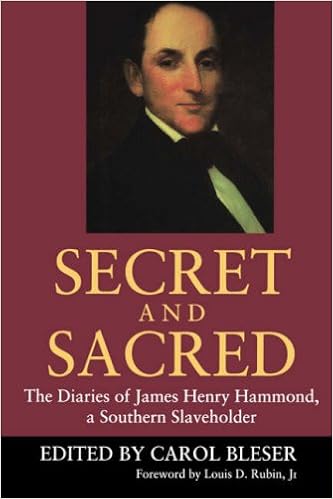
The idea of States withdrawing from the Union was not new in 1860, the first being New England’s desire for independence once the Louisiana Purchase was contemplated, and afterward during the War of 1812, and as other territories were added. It is said that John C. Calhoun learned his concept of secession from the New Englanders. In 1850, as described below, the withdrawal of the South from the Union was well along and only a matter of time.
Bernhard Thuersam, www.Circa1865.org The Great American Political Divide
The Impassable Breach in 1850
“[Silver Bluff], 17 March 1850
“The Session of Congress has been stormy and thus far nothing has been done but to debate Slavery and the Union. The South has threatened dissolution through many Representatives, in doing which [Robert] Toombs of [Georgia] and [Thomas] Clingman of [North Carolina], both Whigs, have taken the lead. [South Carolina] rather silent.
In the Senate [Jeremiah] Clemens of [Alabama], [Solomon] Downs of [Louisiana], [Henry] Foote and [Jefferson] Davis of [Mississippi have been the most violent. Many calculations have been paraded showing the advantage of disunion to the South. On the other hand threats of coercion have been made freely by minor men. There have been some terrible scenes in the House.
The North has given up the Wilmot proviso for the present, on the avowed ground that that Slavery is naturally excluded from the newly acquired Territories. The main question is on the admission of California as a State – the adventurers there having without any of the usual forms, made a Constitution, excluding Slavery, and asked for admission into the Union.
[Henry] Clay has brought in a long string of what he calls compromise resolutions, which surrender everything in issue to the North. He has denounced the South bitterly and prophesied, if not threatened, Civil war and coercion.
The South contends that the admission of California [as a free State] destroys her equality in the Senate – already merely nominal there, for Delaware belongs to the North. That deprived of equality there [in the number of slave vs. free States] and already in a vast minority in the House and Electoral College, she will be undone.
Mr. [John C.] Calhoun has made an admirable speech, showing that the equilibrium between the North and South is utterly annihilated, and must be restored or we must separate. As such a restoration is well known to be an impossibility – his proposition is plainly – Disunion.
Webster followed with a most eloquent speech, denouncing the free-soil and anti-fugitive [slave] movements, but denouncing slavery and yielding nothing. At this moment, however, my impression is that they will enter into another fatal truce and stave off the difficulty for the present.
I have had drawn up for a month . . . many resolutions which I had intended to proposed there, if I could get backing. They are short and to the effect that Conventions should be immediately called in the Slave States to send Delegates to a General Congress, empowered to dissolve the Union, form a new Constitution, and organize a new Government, and in the meantime appoint a Provisional Government until the Constitution could go into operation.”
(Secret and Sacred, the Diaries of James Henry Hammond, a Southern Slaveholder; Carol Bleser, editor, Oxford University Press, 1988, excerpts pp. 197-198)

No comments:
Post a Comment